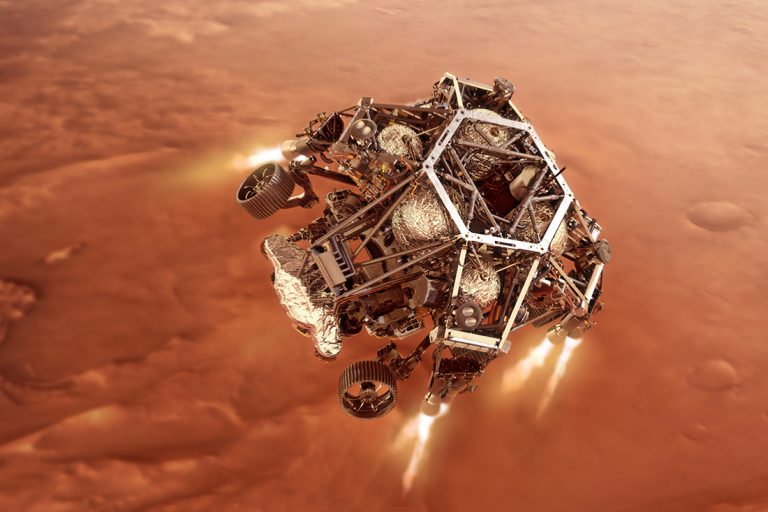
On Feb. 18, the world watched as the Mars 2020 Perseverance rover landed on Mars and started exploring Earth’s closest neighbor. For scientists who have spent their lives researching the Red Planet, the seven-minute descent from the top of the Martian atmosphere to the safe landing on the surface was a stomach-churning combination of fear, nerves, hope and exhilaration.
NAU News spoke to researchers out of the Department of Astronomy and Planetary Science and their collaborators at the U.S. Geological Survey about the nail-biting moments as Perseverance approached the surface and the potential this work has for moving forward the conversation about life on Mars.
- Valerie Payre, postdoctoral scholar in NAU’s Department of Astronomy and Planetary Science;
- Kenneth Herkenhoff, research scientist at the U.S. Geological Survey;
- Lauren Edgar, research geologist at the U.S. Geological Survey Astrogeology Science Center;
- Ryan Anderson, physical scientist at the USGS Astrogeology Science Center;
- Mark Salvatore, assistant professor and associate department chair, NAU’s Department of Astronomy and Planetary Science.
See the full article here.